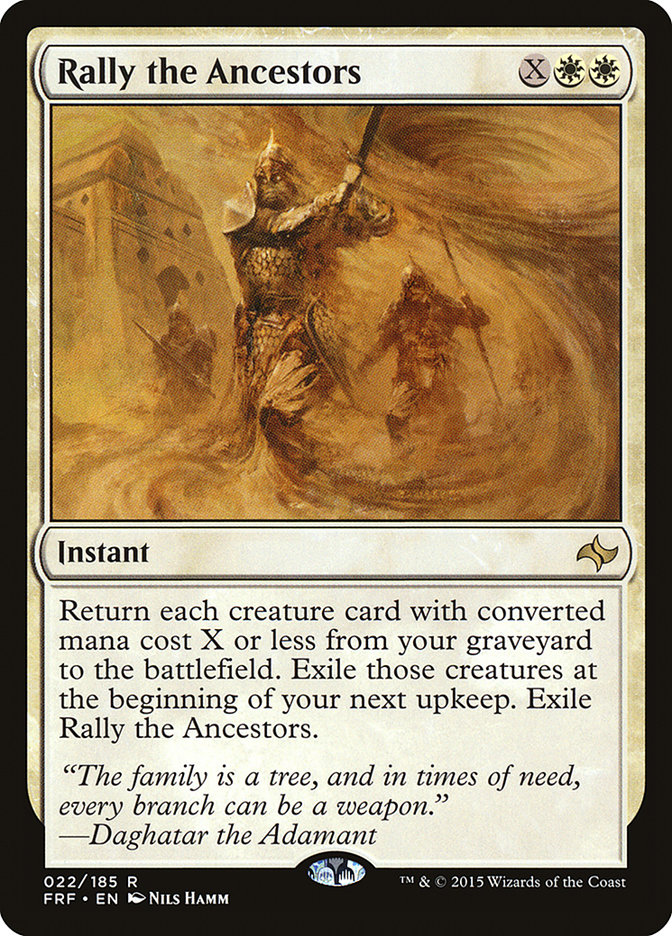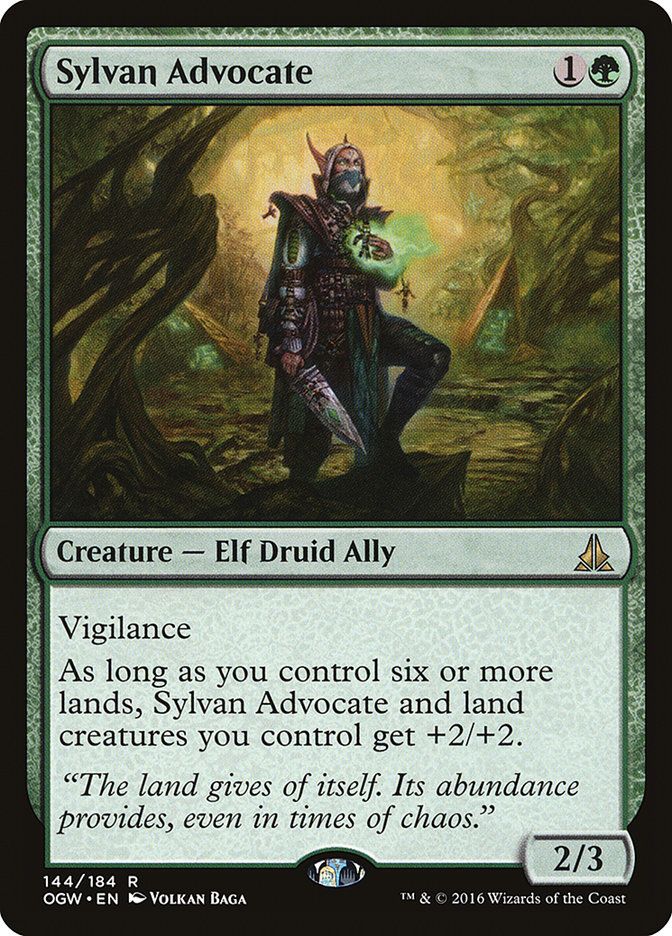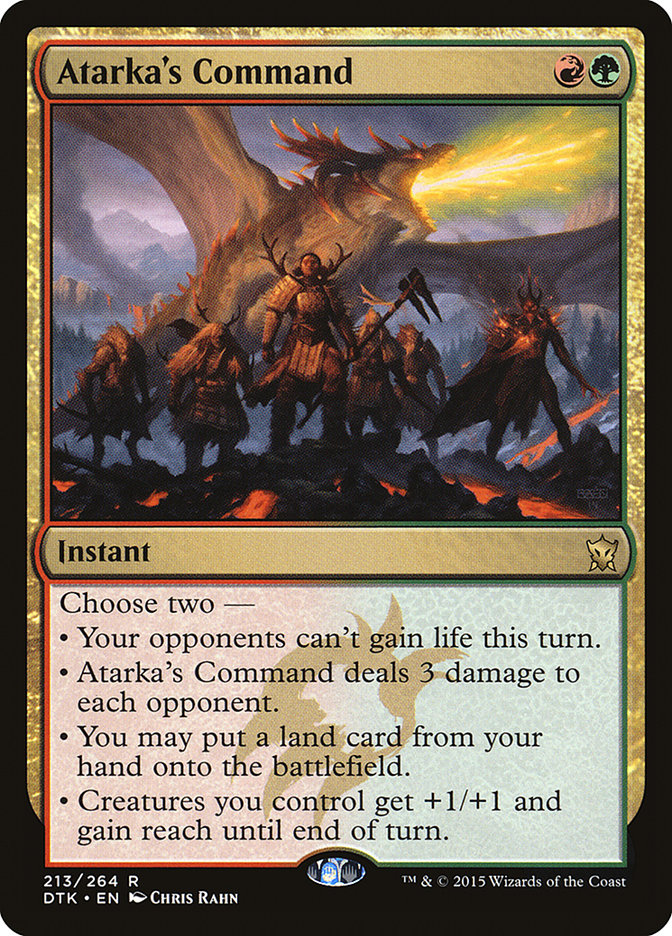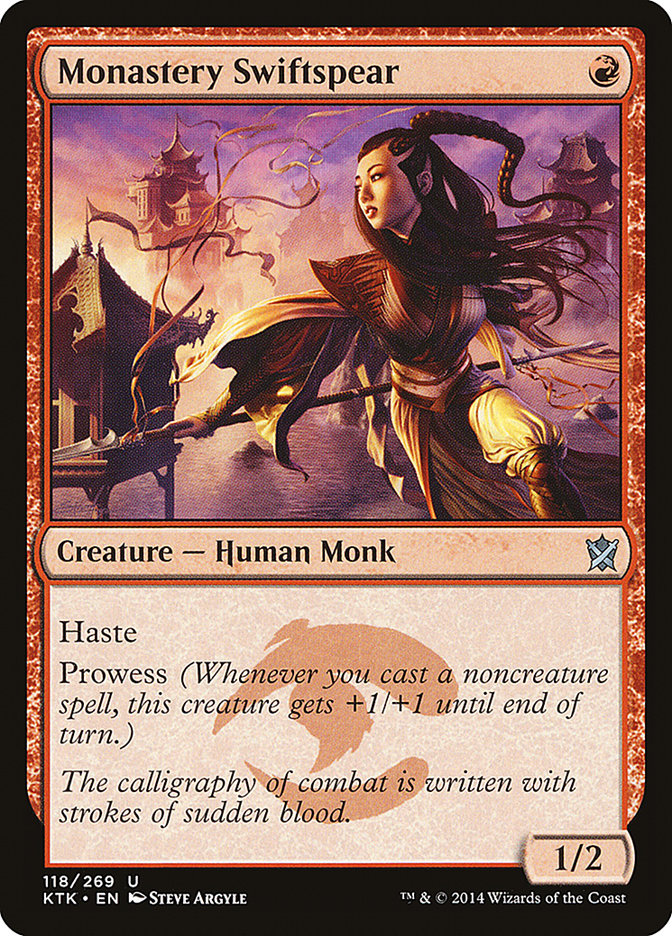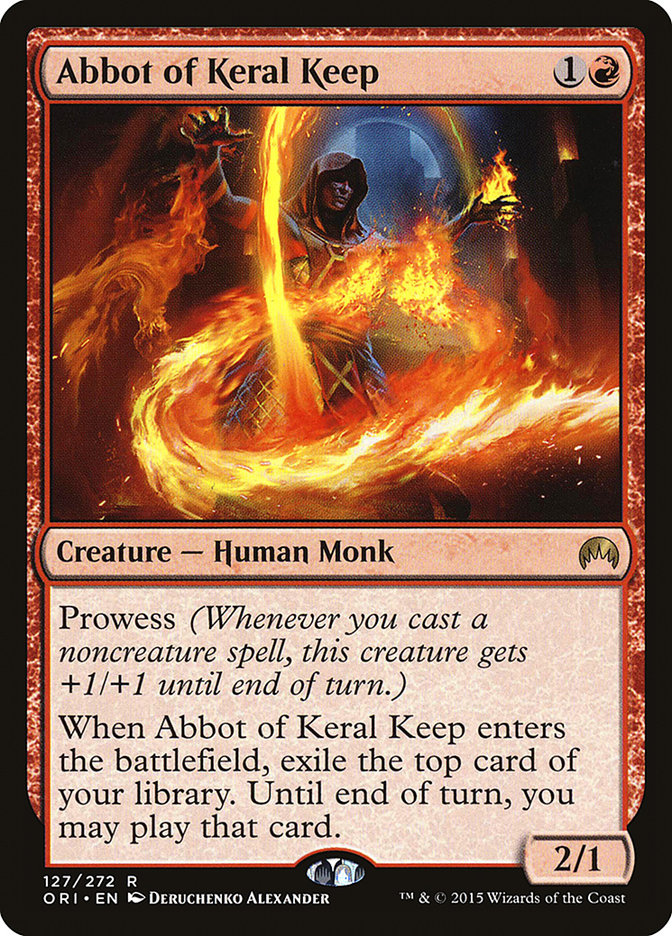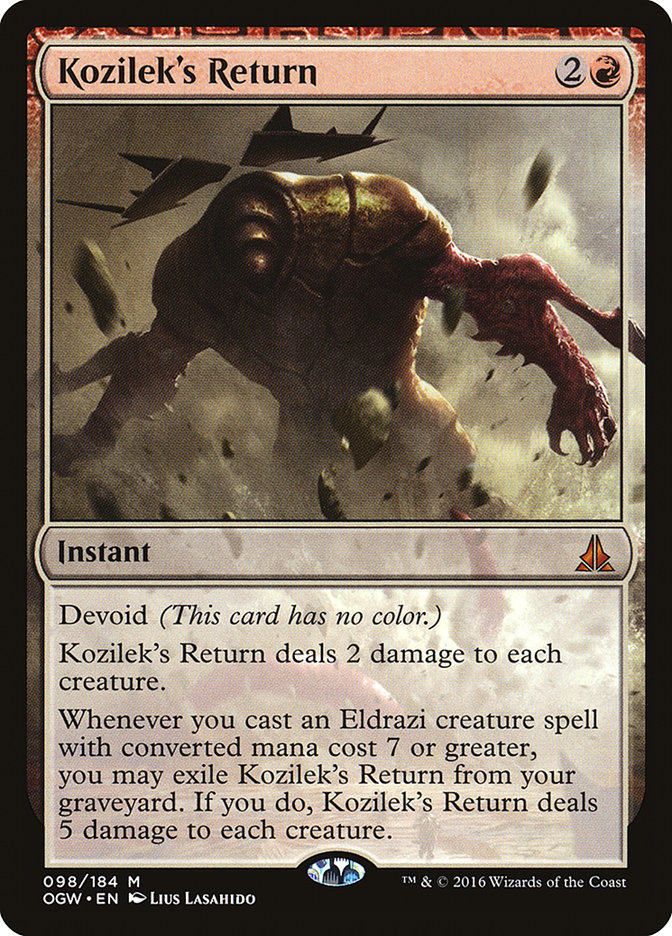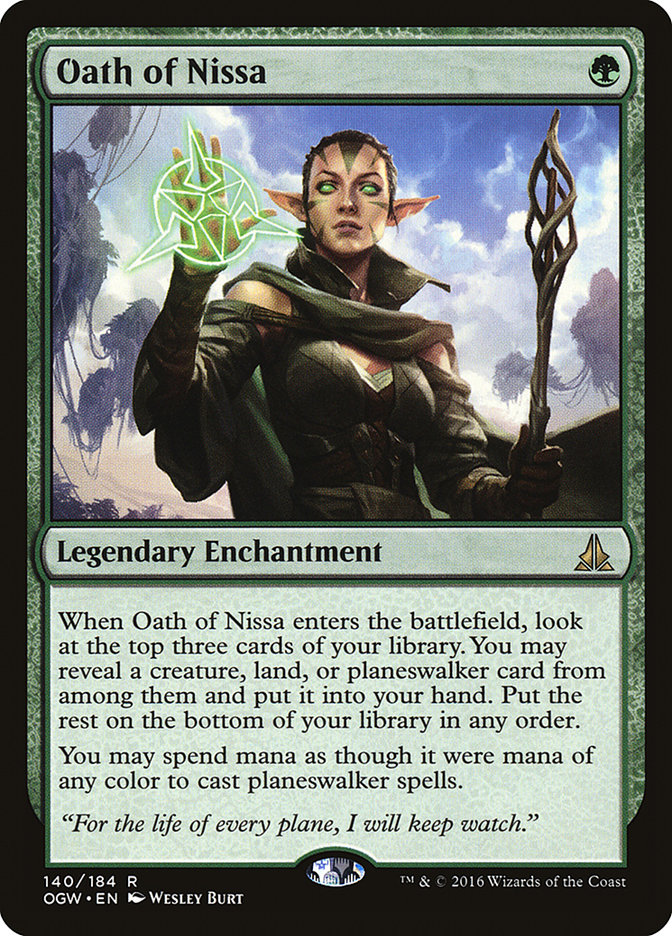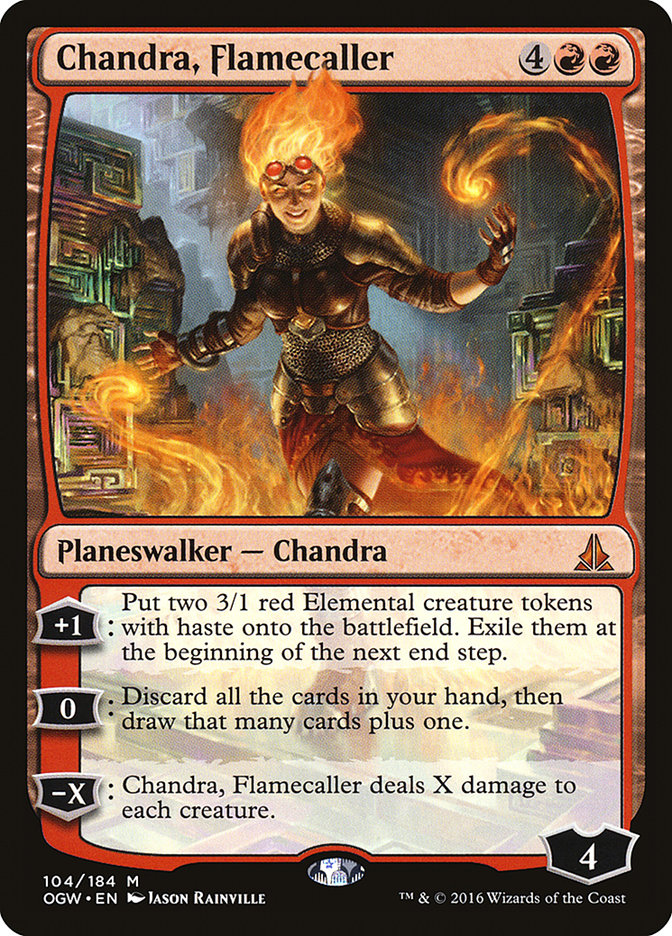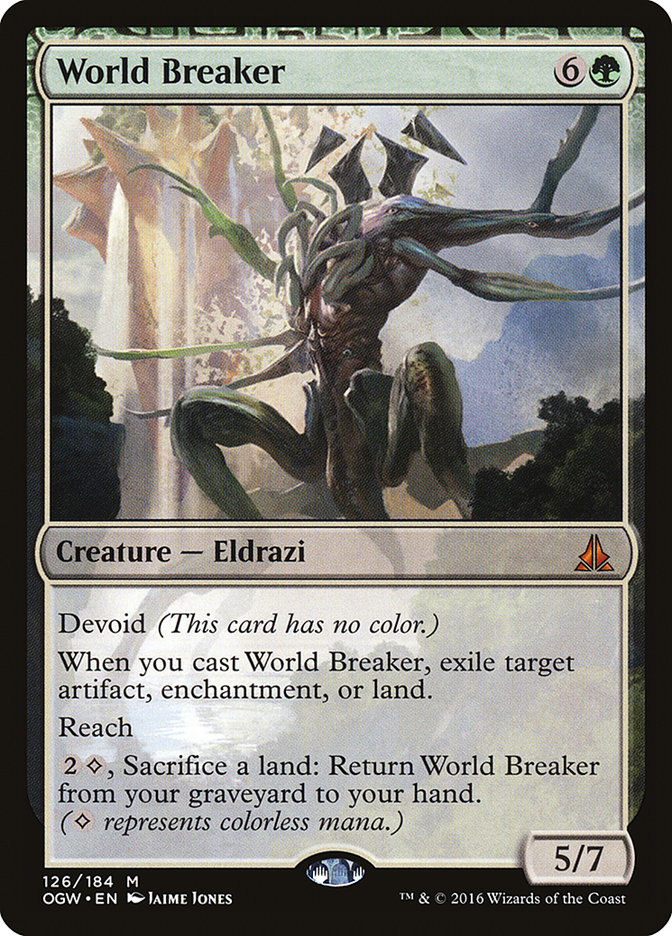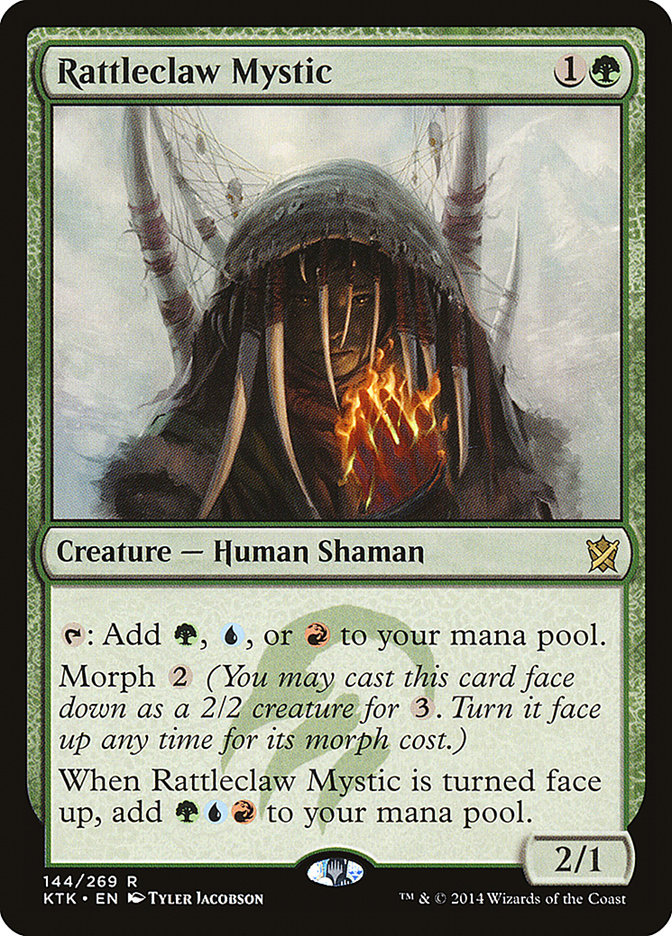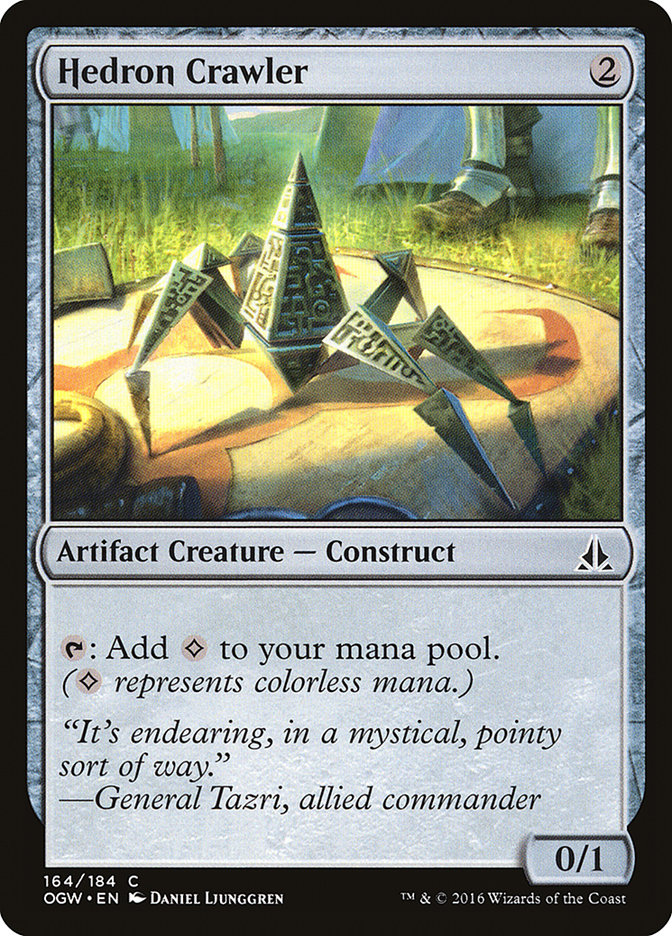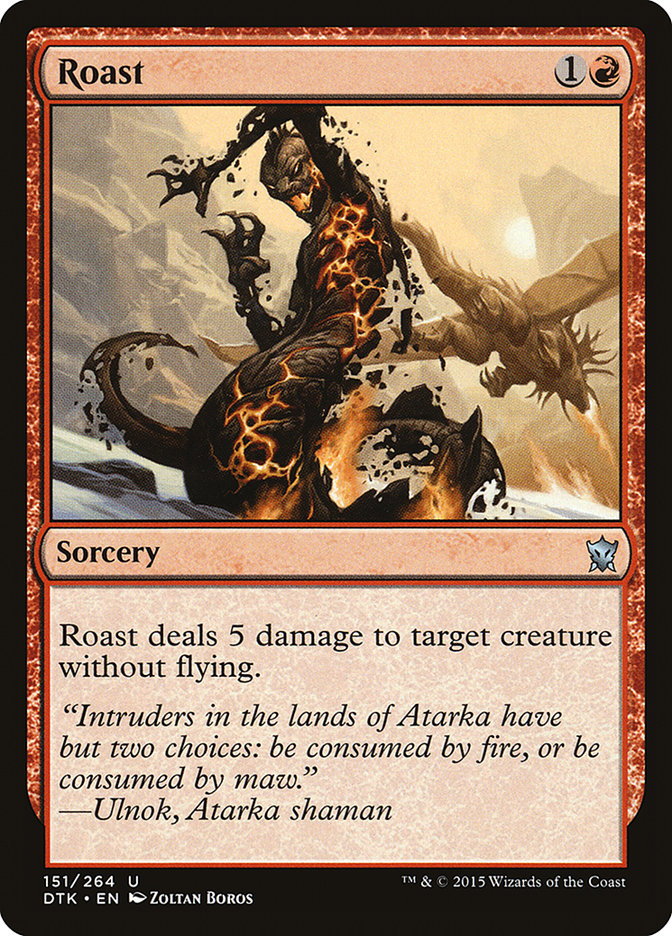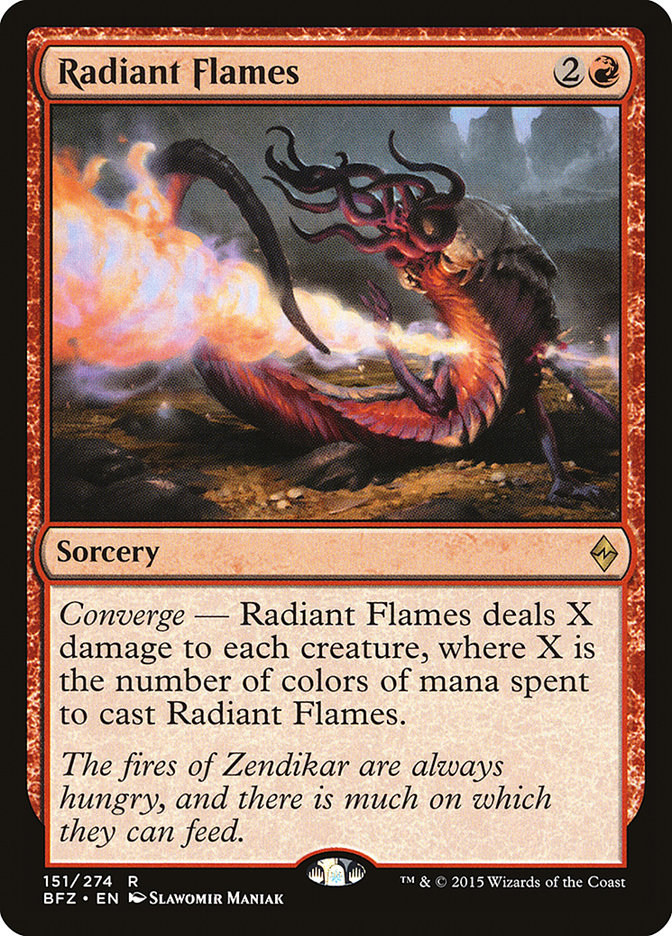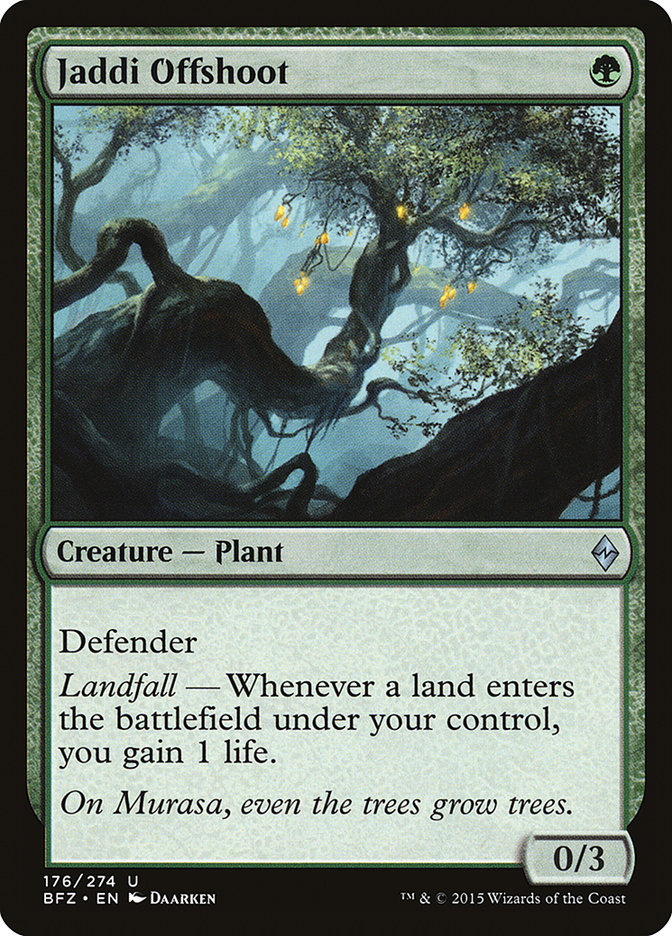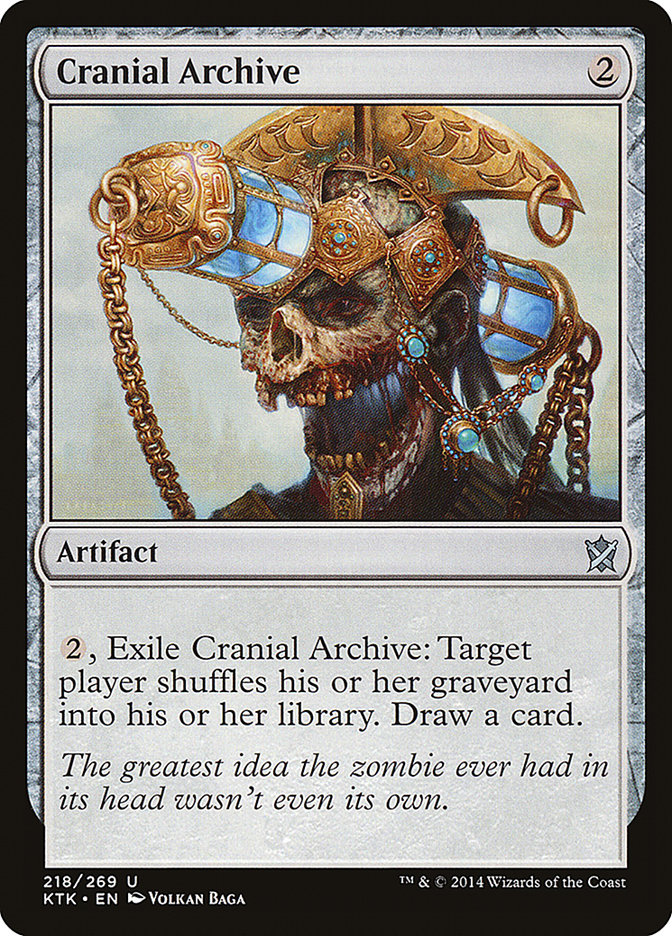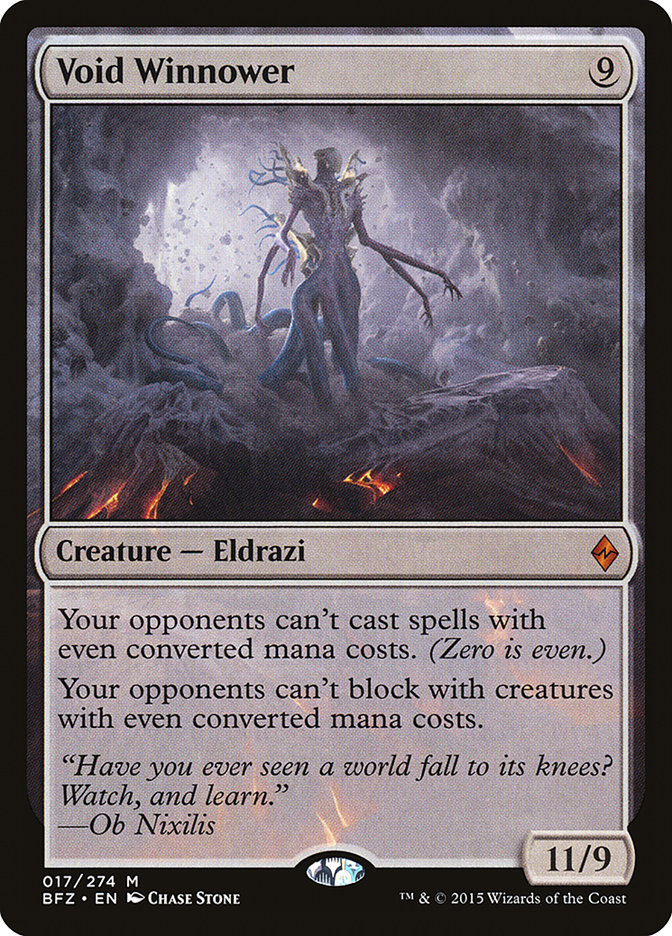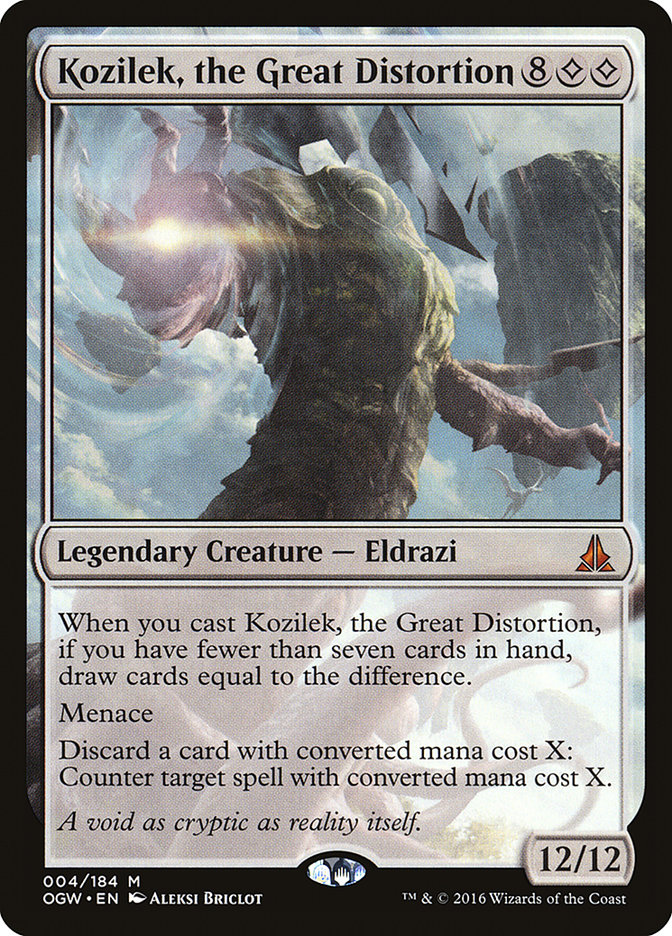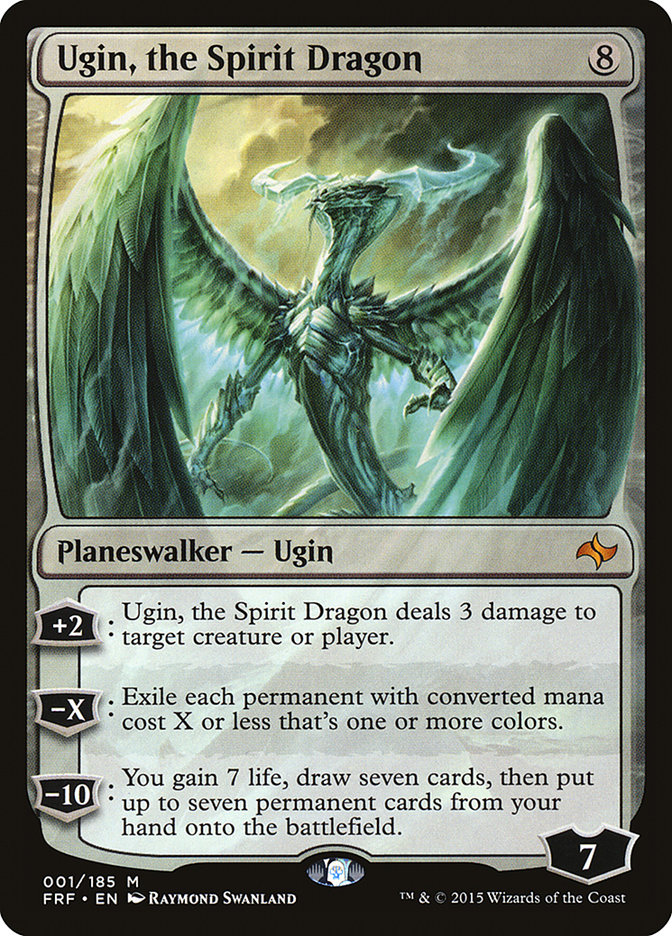 Rally is definitely the best deck.”
Rally is definitely the best deck.”
Now, I remember that from around the time of Pro Tour Battle for Zendikar I had some success with a ramp deck we called “Naked Siggy” because I had built it while lying in my bed in my boxers. I remembered that the Four-Color Rally matchup didn’t feel all that bad and Oath of the Gatewatch provided some more tools for this deck, so I got right to work brewing. I didn’t have much time because the event was only a day-and-a-half away, so anything that didn’t feel right I had to scrap immediately.
Inevitably I asked my go-to in deck selection, Sam Pardee, what decks he liked moving forward. He told me he was enjoying playing a Bant Company deck. Sadly, none of my versions of Ramp worked in the short time I had to prepare, so I decided to work on Bant Company a bit. I played some games and was really impressed with the deck. For the record, had the MOCS playoff event been a Grand Prix, I likely would have settled on Bant Company.
Fast forward to about 1 AM the night before the MOCS. I’d just finished off settling on the 75-card Bant company deck I was going to register and was about to close out all my programs when I got a message from Platinum Pro Steve Rubin.
“I finally figured out how to win with Ramp if you are still interested in a list.”
Of course I was still interested. I want nothing more in life than to activate Ugin, the Spirit Dragon. He sends me his list which, after I talked about 1-2 card choices, looked like this:
Creatures (14)
- 3 Rattleclaw Mystic
- 2 Dragonlord Atarka
- 1 Ulamog, the Ceaseless Hunger
- 4 World Breaker
- 4 Sylvan Advocate
Planeswalkers (5)
Lands (25)
Spells (16)

This is the 75 I ended up registering for the MOCS playoff after playing zero games with this exact version but quite a few with other versions. The frustrating thing was that this list looked remarkably similar to the lists I had been building with only a medium amount of success. Steve’s list had one standout addition, Sylvan Advocate.
I asked Steve about this card specifically because it seemed off-plan entirely. The deck doesn’t win with chip damage; it takes full control and locks opponents out. Medium-sized creatures are usually a liability because they make certain removal spells such as Murderous Cut live on turns they don’t lose tempo to cast them. The strongest case for Advocates is they don’t die to a cast Kozilek’s Return and can provide a blocker for very specific creatures, such as other Sylvan Advocates, in early stages while turning into a legitimate blocker on turn 4 after an Explosive Vegetation.
After a short discussion he said, “I started winning more when I added them but I can’t really explain why.” In similar lists I had built I had Jaddi Offshoot in the maindeck in the spot where Sylvan Advocate was in this list. I was unimpressed with Offshoot maindeck, so I registered and trusted in what Steve had sent me and went to bed still contemplating if I should play Bant Company or not. I woke up and decided to stick to my guns and play Ramp, as it would be the more fun choice. We play Magic for fun, right?
After playing the tournament to a 5-2 record, I was impressed with how competitive the Ramp deck was. In the past Ramp struggled. The most obvious reason for this was the Atarka Red matchup.
The win percentage the Ramp decks had against this deck were astonishingly low. The win percentage of the Ramp decks was decent against the rest of the field, but its good matchups weren’t strong enough to warrant playing a deck that was virtually just never going to beat Atarka Red.
Another reason the deck fell out of favor was its weakness to hate. Once it was on the map, players started to sideboard specific hate cards such as Infinite Obliteration or plans involving a lot of discard, and the deck just wasn’t resilient enough to withstand a reasonable sideboard plan. Quite frankly, the deck just didn’t have a good enough diversity of threats to thrive. I think with the inclusion of cards like World Breaker; Chandra, Flamecaller; and Kozilek, the Great Distortion the deck got some new threats and Eldrazi Ramp has a chance to excel in the format.
A day after the MOCS Playoff, I’m pondering and tinkering with the list and figuring out how to improve it for the future. Simon Nielson played a green and colorless version of Ramp to much success, losing in the finals but locking up an invite to the MOCS in the process. This is the list Simon Nielson aka TombSimon registered.
Creatures (18)
- 4 Rattleclaw Mystic
- 3 Whisperer of the Wilds
- 2 Ulamog, the Ceaseless Hunger
- 4 World Breaker
- 3 Thought-Knot Seer
- 2 Hedron Crawler
Planeswalkers (2)
Lands (24)
Spells (16)

I think Simon did an incredible job building this deck for this specific tournament, and it shows in the result. I think it was smart to figure out that Atarka Red would be in low numbers in the MOCS Playoff metagame, and focusing on beating other matchups was a good choice. In the future, however, in less predictable metagames, I would want to take a different approach and not just fold to Atarka Red. If I had a Standard tournament tomorrow, this is the Ramp deck I would register.
Creatures (13)
Planeswalkers (5)
Lands (25)
Spells (17)

I’d like to discuss some of the new cards from Oath of the Gatewatch and just how they help improve the deck from where it was before Oath of the Gatewatch.
Kozilek’s return gave us a new tool to combat Atarka Red, and it may be a mistake to avoid playing with this spell in the future. It not only provides a tool to combat Atarka Red but also an uncounterable sweeper effect against a deck like Bant Company, which was extremely popular in the MOCS playoff and which I expect to be popular moving forward. In general the Ramp deck can lose to a single Disdainful Stroke on any of the many expensive sweepers we plan to stabilize with. The Bant Company deck can produce cheap threats and then leave up flash creatures, Collected Company, and counterspells while we struggle to stabilize. Casting World Breaker and triggering Kozilek’s Return is the most reliable way the Ramp deck can combat a fast start plus countermagic.
The “green Ponder” is a stretch but Oath of Nissa certainly does improve the consistency of the deck. One of the biggest issues I’ve had before Oath of the Gatewatch was not being able to find Ugin, the Spirit Dragon. Oath of Nissa gave us a cheap way to smooth out our draws and also be able to cast Chandra, Flamecaller. Speaking of which…
Chandra has been very impressive. Chandra acts as a six-mana sweeper, a way to pressure planeswalkers, and a card draw engine, conveniently allowing us to discard Kozilek’s Return while digging to Eldrazi such as World Breaker to trigger the return on the way down. Chandra doesn’t kill every creature in the format, such as Siege Rhino, which is one of the few drawbacks I’ve come across with this card. If Rhino weren’t as popular, I would consider playing more Chandra, Flamecaller instead of Dragonlord Atarka in the future.
I must admit that World Breaker didn’t impress me at first. Not being able to kill a creature or planeswalker when casting it is a serious drawback. The fact that World Breaker is a recurring threat that trigger’s Kozilek Return is what makes it shine. The deck’s plan is to blow up threats while inhibiting the opponent’s ability to deploy more by way of destroying lands. World Breaker in combination with Kozilek’s Return is really tough for most decks to beat. Sometimes we play an Ugin, the Spirit Dragon, sweep up the battlefield, and are dead or significantly pressured by a creature-land. World Breaker with Kozilek’s Return in the graveyard is not only more mana-efficient but can allow us to exile the creature-land, or, if there happen to be two, we can block with our leftover 5/7.
After playing in the MOCS Playoff, I can say for sure that Sylvan Advocate is not where you want to be. It is exactly what I thought it would be, a creature that doesn’t add to the plan and even has problems blocking until the midgame where your deck has either successfully ramped and can start churning out sweepers or has failed to do so, in which case it isn’t going to be enough to help you win. I decided that mana creatures are definitely where I’d want to move in the cheap spell slot.
That’s a full playset of Rattleclaw Mystic in addition to two Hedron Crawler. Why Hedron Crawler over Leaf Gilder or Whisperer of the Wilds? There are a few reasons. First of all, Hedron Crawler doesn’t die when we sweep the battlefield with Ugin. This can allow us to play an Ulamog, the Ceaseless Hunger a turn earlier to lock up the game or even provide us a chump blocker for a creature-land, giving us another turn to develop our battlefield. Another reason is that we can easily cast it off of Hedron Archive, which comes up some of the times you draw it the turn you’re casting Herdron Archive or are holding onto it for a Kozilek’s Return.
A third reason: it is something we can tutor up with a Sanctum of Ugin if we need an additional blocker the turn we cast an Ugin, the Spirit Dragon or World Breaker and trigger Kozilek’s Return. Also, Hedron Crawler provides a colorless source to use to return World Breaker, which has come up more than I’d expect. Finally, the fourth card I used to replace the Sylvan Advocates from my MOCS list was an additional Kozilek’s Return. This card simply overperformed for me. Drawing multiples was never an issue, because it would just allow me to cast two in the same turn after an opponent resolved a Collective Company or had two or three creatures with three or more toughness on the battlefield.
The biggest problem I can’t really resolve with the deck as of right now Is the nombo of mana creatures and Kozilek’s Return. In my experience over the past few days with the deck, it was just too important to ramp early and have the ability to cast an Explosive Vegetation or Hedron Archive as quickly as possible. Rattleclaw Mystic was a card I always disliked in the ramp decks before because most of the decks were playing Wild Slash or Fiery Impulse at the time. With an uptick in decks like Bant Company, Four-Color Rally, and other Ramp decks, mana creatures are much better suited for the metagame.
Sideboarding
Sideboarding with this deck is somewhat difficult to explain because of the variety of decks running around in Standard. For that reason it is difficult to list a complete sideboarding guide, but I can discuss why each card in the sideboard was chosen.
Roast specifically targets Abzan decks. Anafenza, the Foremost and Siege Rhino can provide very fast starts that put us in tough spots before we can ramp to a sweeper and blow up the world. Roast is cheap enough that we can cast a ramp spell or mana creature on turn 4 or 5 in addition to casting Roast to keep us alive until Ugin, the Spirit Dragon or Dragonlord Atarka come to sweep up the battlefield. In this matchup I like to sideboard down to one or zero Kozilek’s Return. It doesn’t really kill anything the first time it’s cast except your own mana creatures, which they have a difficult time interacting with without disrupting their curve. So a straight swap of Roasts for Returns in this matchup is where I’d aim.
Essentially filling the same role as extra sweepers against Atarka Red. Having as many three-mana sweepers as possible will vastly improve the Atarka Red matchup. I would straight swap these for Hedron Crawlers, because they both die to the sweepers and cannot block profitably. Kozilek’s Return can be brought in in any matchup where it is backbreaking enough in conjunction with World Breaker.
Jaddi Offshoot is another nod to the bad Atarka Red matchup but can also provide a way to stabilize early against a variety of decks. Whenever Jaddi Offshoot can profitably block a reasonable number of creatures, it is a decent inclusion post-sideboard. This was a card I tried in many iterations of the maindeck, but ultimately it just wasn’t good enough against enough decks.
Cranial Archive is the only form of graveyard hate we are left with. When Rally is considered one of the best decks in the format, it’s nice to have at least something to stop it. Cranial Archive is a way to lock up the game when you get in a position where you only lose to Rally the Ancestors, which happens a fair amount in the experience I had playing the matchup. I’m not entirely sure it’s necessary to be favored, but if you expect a lot of Rally, I think it’s worthwhile to have in your sideboard.
This is strictly for the mirror matchup. The most important card in the matchup is Ulamog, the Ceaseless Hunger. Preventing them from casting it will win the game on its own. Having one sideboard slot that can also be searched up with a Sanctum of Ugin is worthwhile.
I used to play four copies of Ulamog in my original list. World Breaker has allowed us to play fewer but still have a fluid plan against control decks. The second copy is for mirrors, pure control decks, and any deck that is planning to play a long game.
Kozilek, the Great Distortion is in the place where Desolation Twin used to be. I bring in Kozilek against control decks and decks I expect to see Infinite Obliteration from. Kozilek is extremely powerful for closing out a game but unfortunately doesn’t improve the battlefield state enough for a ten-mana spell.
This is the sideboard slot I’m least confident in. Basically I want the fourth Ugin, the Spirit Dragon when I’m playing against decks like Abzan that it completely shuts out. Abzan is a tough matchup that becomes very easy when Ugin, The Spirit Dragon hits the table. Chandra, Flamecaller isn’t nearly as good against Siege Rhino as Ugin, so I sideboard in the fourth for this matchup.
The Future
As I stated before, this is the list I would register tomorrow if I were going to play a Standard tournament. Do I think this deck is perfect? No. Is this the best deck in Standard? I don’t think so, but I don’t think I could tell you what is either. Standard is extremely diverse, so I think playing what you know and enjoy is a good starting point until you can form a solid opinion about what to expect. I did just that and had some success this past weekend in the MOCS Playoff Event. I think this list is a good starting point for G/R Eldrazi Ramp and is something I will certainly work on in the upcoming days.

